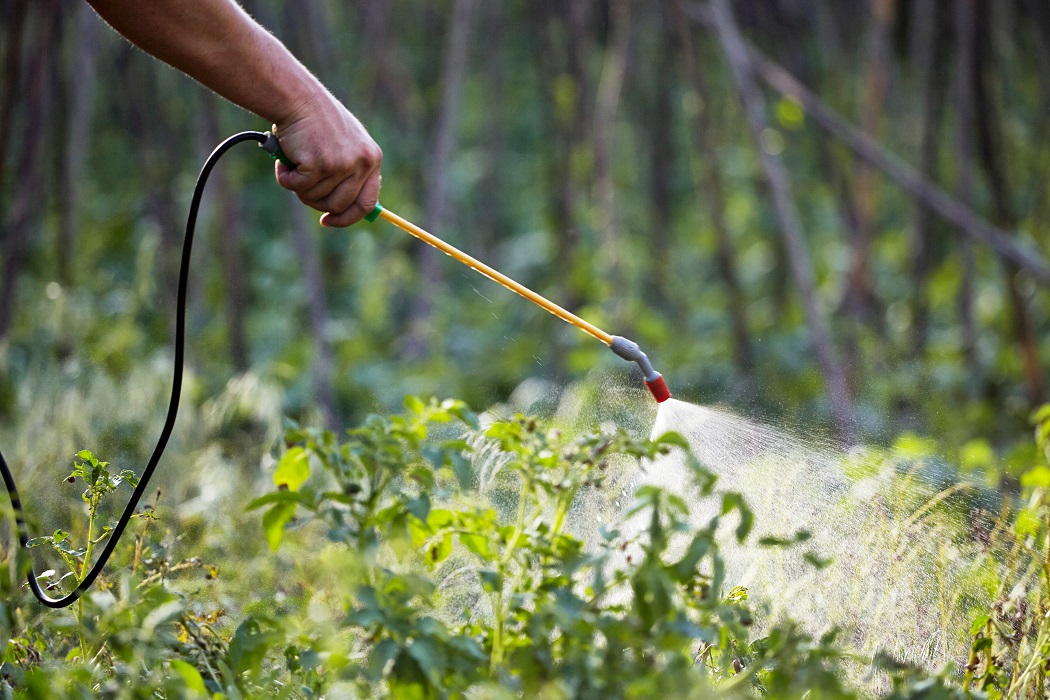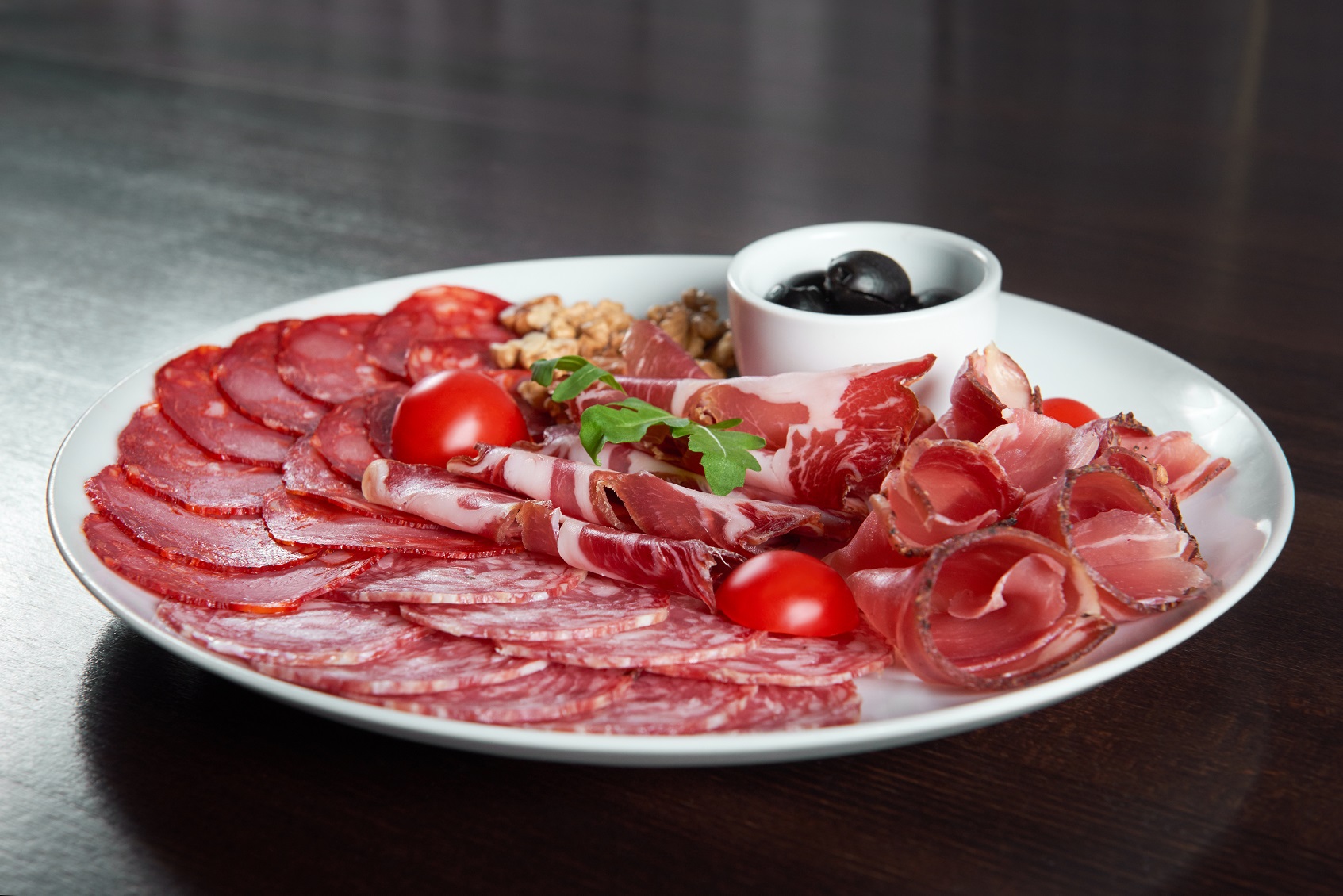Why Do We Get Cancer? A Review of Causes
The incidence of cancer has never been higher. We are seeing a steady increase in cases each year. It is estimated that in 2016 we saw 1.6 million new cases, with breast, lung, prostate, and colon cancers topping the list.[1] Why are more people getting cancer? A carcinogen is a substance capable of causing cancer in living tissues. Its hard to conceptualize the numerous and varied forms of carcinogens we are exposed to daily. Carcinogens are found in food, the environment, household and body products, workplace, and pharmaceutical medications. What are these carcinogens, and how can we reduce our exposure?
Pesticides
Pesticides have been used for centuries as part of agriculture. It was the rise of synthetic pesticides that began to have direct and indirect toxic effects. Indirect effects due to bioconcentration, the accumulation of molecules in fatty tissue, and biomagnifications, the increase in concentration of a substance as it moves up the food chain.
Pesticides and herbicides have been known to cause cancer for decades. Examples of known carcinogenic pesticides are:
- Organochlorine pesticides: DDT, DDE, chlordane, heptachlor, dieldrin, methoxane
- Organophosphate pesticides: diazinon, chlorpyrifos
- Triazine herbicides: atrazine, simazine, cyanazine
- Chlorophenoxy herbicides: 2,4-D, 2,4,5-T, Agent Orange

Pesticides and herbicides are used on crops, lawns, gardens, and golf courses.[2] They can be found on food, in the air, at home, and in our drinking water.[3] The use of glyphostate, the active ingredient in Roundup, a herbicide produced by Monsanto, is up one-hundred-fold since it was first sold on the market in the 1970s.[3] Glyphosate is one of the most commonly used herbicides in the world. It is sprayed on corn, soy, and wheat crops. It was found that 90% of soy crops have glyphosate residues. As a potent endocrine disruptor, even at
subagricultral doses, glyphosate has been shown to cause cancer.[4] Its carcinogenicity is related to its estrogenic effects; its ability to bind estrogen receptors and stimulate the growth of cancer.
Parabens
Parabens are used in cosmetics and body products to increase the shelf life and stability, by killing pathogens like bacteria and fungus. They are preservatives. They have also been shown to be present in 100% of breast-cancer–tissue samples.[5] Although they are normally excreted in the urine after absorption, a small amount (1%) stays in the body, acting as a weak estrogen. Parabens act on human breast cancer cells, causing them to grow.[6]
Processed and Red Meat
Nitrosamines are used in processed meat products as a preservative in the form of nitrates and nitrites. They are also generated through the incomplete combustion of meats during cooking. Some of the largest nitrosamine offenders are hot dogs, bacon, and deli meat. Nitrosamines have been used for decades to preserve the red colour of meat. Studies have now confirmed their ability to cause cancer. Red meat has also been shown to cause cancer, most notably colorectal and stomach cancers.[7][8][9]

Pollution
The most common airborne carcinogens today are polycyclic aromatic hydrocarbons (PAHs). PAHs enter the body through contaminated food, drinking water, cigarette smoke, vehicle exhausts, and contaminated air from occupational settings.[10] PAHs damage DNA, leading to the development of cancer.[11] Most of our environmental intake of PAHs happens through the contamination of food during food processing techniques (smoking, cooking, charcoal broiling, grilling) and methods used for analysis, as well as in unprocessed foods through soil and due to the bioaccumulation found in animal sources of food. Fish and shellfish contain PAHs, due to contamination of coastal waters.
A Prescription for Health
So why do we have cancer? Because we eat, use, and absorb carcinogens. Avoiding our exposure to known carcinogens can greatly reduce our risk of developing cancer. There are six lifestyle changes we can make to greatly decrease our exposure to known carcinogens:
1. Eat Organic
Local farmers’ markets in your community ensure that your food is pesticide- and herbicide-free, and grown with care. Organic grocery stores are found in all large and small cities in North America. Consciously grown food is more expensive than agro-business only when the cost to the environment and medical system is not taken into consideration. Disease is not only financially expensive, but also emotionally draining. Eating well is the best prevention of long-term disease.
2. Use Only Natural Products on Your Skin and in Your Home
There are lots of effective natural cleaning products. Essential oils are antimicrobial and can be used in natural cleaners as a disinfectant. Clothing detergent can be a source of carcinogens and should be switched for a natural alternative. Avoiding dryer sheets and fabric softeners is an easy way to reduce toxin load. Natural body products are essential. Make sure your creams, make-up, cleansers, and toothpaste are toxin-free. Avoiding products with alkylphenols, parabens, phthalates, triclosan, polyethylene glycols (PE-G), aluminium, and sodium laurethsulfate (SLS) will reduce your exposure to carcinogens. Mineral-based make-up is widely available now as well as natural, toxin-free deodorant, toothpaste, creams, and shaving products.[12][13]
3. Make the Effort to Spend Time in Nature
Clean air and exercise are important to reducing the risk of cancer and the cancer itself.[13][14] Taking the time each week to leave the city will help to reduce exposure to environmental pollution. Exercise increases the number of natural killer cells, helping to protect us from cancer and other illnesses.[15]

4. Add Anticancer Foods Into Your Diet
Brassica—These are a family of foods known to support liver detoxification: broccoli, mustard greens, kale, Brussels sprouts, and cabbage.
Turmeric, raw or dried, has anti-inflammatory and anticancer properties. It can be eaten in curries or made into golden milk. Turmeric can be added to many dishes to improve its taste and prevent cancer, as well as reduce inflammation and pain.
Green tea contains a powerful cancer-fighting compound called epigallocatechin gallate (EGCG). It’s a powerful antioxidant that acts to protect the cardiovascular system too.
Mushrooms—specifically reishi, maitake, shiitake, and turkey tail—contain beta-glucans which boost our immune system to recognize and kill cancer and prevent its spread.
Astragalus membranaceus is a root mostly sold dried. It has antitumour capabilities related to its ability to restore T-cell function, which is repressed in cancer patients.[16][17][18][19]
5. Reduce Meat Intake
Colon cancer was shown to have a 30–40% reduction in risk with higher intake of vegetables. There is a two-fold increased risk of ovarian cancer for a dietary pattern high in meat and fat.[20] Meats contribute to cancer risk through provision of fat as well as a vehicle for carcinogenic products from cooking: heterocyclic amines and nitroso compounds. Smoked meats have recently been shown to be carcinogenic, due to the incomplete combustion of meat from barbequing or smoking being highly mutagenic.
Fish are a good source of omega-3 fatty acids, which possess anticarcinogenic properties. A pescatarian diet (mostly vegetables and fish) has been shown to have a lower risk of ovarian cancer due to an inverse association between the intake of omega-3 fatty acids from fish and the development of ovarian cancer.[21]
6. Avoid Excessive Interaction with Estrogen-Like Compounds
Many substances in nature and man-made mimic estrogen activity in the body, like the herbicide Roundup discussed earlier. For plant-based estrogens, this effect is weak and can actually be cancer-preventative. But for the man-made sources of exogenous estrogen, as well as excessive doses of a natural source, the outcome is harmful. Soy contains compounds called, isoflavones, which are weakly estrogenic. BPA is found in soft plastics and shown to be estrogenic. Eliminating BPA—in the form of plastic water bottles and certain canned goods—from your life, as well as limiting your intake of organic soy and soy products, can decrease the exposure to estrogenic substances.
Summary
A diet of organic vegetables and fish, combined with a natural lifestyle, may be the key to reducing the incidence of cancer worldwide. Michael Pollan said it best in his book The Omnivore’s Dilemma: “Eat food, not too much, mostly plants.” To that I would add to make sure most of those vegetables are raw, and combine them daily with anticancer superfoods; an organic diet; and a natural, toxin-free lifestyle.
Note:
For a complete list of carcinogens, you can visit the National Toxicology Program at the Department of US Health and Human Services. They publish an ever-updated list of substances to be known carcinogens.[7]
References
- NIH. National Cancer Institute. Cancer statistics. · http://www.cancer.gov/about-cancer/what-is-cancer/statistics · Updated 2017-03-22.
- Environmental Risks and Breast Cancer. Pesticides and herbicides. · http://erbc.vassar.edu/erbc/environmentalrisks/outsidethehome/ph/index.html · Updated 2010.
- Myers, J.P., et al. “Concerns over use of glyphosate-based herbicides and risks associated with exposures: A consensus statement.” Environmental Health. Vol. 15 (2016): 19.
- Thongprakaisang, S., et al. “Glyphosate induces human breast cancer cells growth via estrogen receptors.” Food and Chemical Toxicology. Vol. 59 (2013): 129–136.
- Darbre, P.D., et al. “Concentrations of parabens in human breast tumours.” Journal of Applied Toxicology. Vol. 24, No. 1 (2004): 5–13.
- Pugazhendhi, D., A.J. Sadler, and P.D. Darbe. “Comparison of the global gene expression profiles produced by methylparaben, butylparaben and 17β-estradiol in MCF7 human breast cancer cells.” Journal of Applied Toxicology. Vol. 27, No. 1 (2007): 67–77.
- American Cancer Society. Known and probable human carcinogens. · https://www.cancer.org/cancer/cancer-causes/general-info/known-and-probable-human-carcinogens.html · Updated 2016-11-03.
- Chan, D.S.M., et al. “Red and Processed Meat and Colorectal Cancer Incidence: Meta-Analysis of Prospective Studies.” PLoS One. Vol. 6, No. 6 (2011): e20456.
- Larsson, S.C., N. Orsini, and A. Wolk. “Processed meat consumption and stomach cancer risk: A meta-analysis.” Journal of the National Cancer Institute. Vol. 98, No. 15 (2006): 1078–1087.
- Diggs, D.L., et al. “Polycyclic aromatic hydrocarbons and digestive tract cancers—A perspective.” Journal of Environmental Science and Health. Part C: Environmental Carcinogenesis & Ecotoxicology Reviews. Vol. 29, No. 4 (2011): 324–357.
- Melendez-Colon, V.J., et al. “Cancer initiation by polycyclic aromatic hydrocarbons results from formation of stable DNA adducts rather than apurinic sites.” Carcinogenesis. Vol. 20, No. 10 (1999): 1885–1891.
- https://www.ewg.org/
- Dr. Ariel Jones. Product line. · http://www.drarieljones.com/store
- Rundqvist, H., et al. “Effect of acute exercise on prostate cancer cell growth.” PLoS One. Vol. 8, No. 7 (2013): e67579.
- Bernstein, L., et al. “Physical exercise and reduced risk of breast cancer in young women.” Journal of the National Cancer Institute. Vol. 86, No. 18 (1994): 1403–1408.
- Chu, D.T., W.L. Wong, and G.M. Mavligit. “Immunotherapy with Chinese medicinal herbs. II. Reversal of cyclophosphamide-induced immune suppression by administration of fractionated Astragalus membranaceus in vivo.” Journal of Clinical & Laboratory Immunology. Vol. 25, No. 3 (1988): 125–129.
- Shao, B.M., et al. “A study on the immune receptors for polysaccharides from the roots of Astragalus membranaceus, a Chinese medicinal herb.” Biochemical and Biophysical Research Communications. Vol. 320, No. 4 (2004): 1103–1111.
- Sun, Y., et al. “Preliminary observations on the effects of the Chinese medicinal herbs Astragalus membranaceus and Ligustrum lucidum on lymphocyte blastogenic responses.” Journal of Biological Response Modifiers. Vol. 2, No. 3 (1983): 227–237.
- Chu, D.T., et al. “Fractionated extract of Astragalus membranaceus, a Chinese medicinal herb, potentiates LAK cell cytotoxicity generated by a low dose of recombinant interleukin-2.” Journal of Clinical & Laboratory Immunology. Vol. 26, No. 4 (1988): 183–187.
- Kolahdooz, F., et al. “Dietary patterns and ovarian cancer risk.” The American Journal of Clinical Nutrition. Vol. 89, No. 1 (2009): 297–304.
- Kolahdooz, F., et al. “Meat, fish, and ovarian cancer risk: Results from 2 Australian case-control studies, a systematic review, and meta-analysis.” The American Journal of Clinical Nutrition. Vol. 91, No. 6 (2010): 1752–1763.
 Ariel Jones, ND
Ariel Jones, ND
Dr. Ariel Jones’ practice focuses on removing the physical,
mental, and spiritual obstacles to cure, and on implementing
a toxin-free lifestyle to achieve radiant health!
www.drarieljones.com

 Stores
Stores